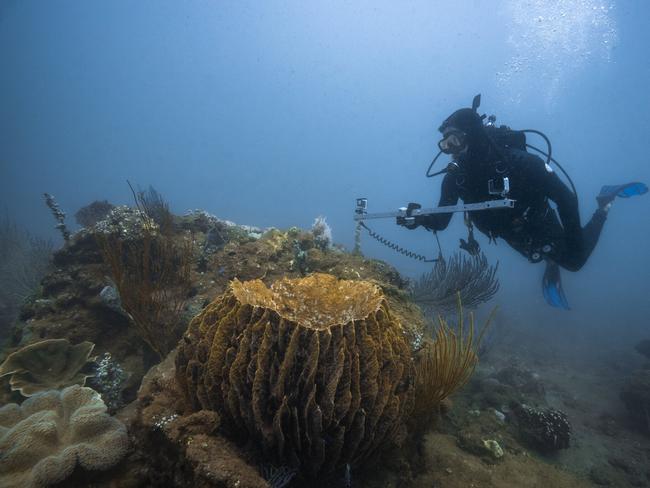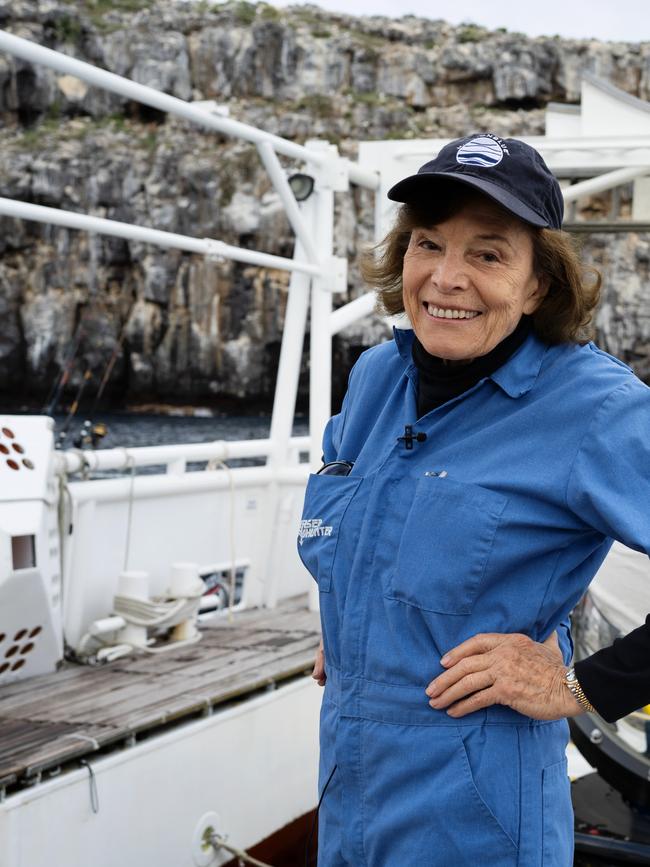How two ocean conservationists are changing how we view ‘value’
Dr Sylvia Earle and Ben Fitzpatrick are linked by many things, including a calling to the ocean.

Marine biologist Ben Fitzpatrick, director of Oceanwise Australia, swears an octopus he once encountered stole a gold Rolex watch.
Or at least this octopus, Fitzpatrick’s playful companion on a fruitless dive to find a gold Rolex a guest on one of his dives had lost overboard, knew exactly where the watch was.
“I swear he hung out with me the whole time (mimicking me). I never found the watch, but I reckon he had it in his lair. He’s sitting there with a gold Rolex. It was the weirdest thing. It was just so unexpectedly sort of like, ‘oh, well, this actually makes sense’.”
What Fitzpatrick means is that there is a vastness to what we don’t know about the ocean, and its many inhabitants are smarter and cannier than we think.

California-based Dr Sylvia Earle, founder, president and chairwoman of ocean conservation group Mission Blue – as it happens, a Rolex testimonee since 1982 – and an oceanographer and diver with a decades-long career in ocean exploration and conservation, agrees.
“The biggest discovery about the ocean, so far, is the magnitude of our ignorance,” says Earle.
Fitzpatrick and Earle are linked together in many ways, though as both note on a call with The Australian, they are yet to meet in person.
Chiefly, they are joined by Rolex’s Perpetual Planet initiative, the largest watch brand in the world’s commitment to ocean and wilderness preservation. They share a lifelong calling to the ocean, and mutual admiration for each other’s work.
Earle, says Fitzpatrick on the call, is “a living treasure”. The New Yorker magazine once called Earle “Her Deepness” and the “world’s best-known woman marine scientist”.
But it is Earle’s work in “hope spots” that links them indelibly.
Deemed by Mission Blue, a hope spot shields its typically abundant, endemic, rare or endangered marine life at risk from man-made pressures.
Under Fitzpatrick’s championship, in 2019 the Exmouth Gulf and Ningaloo Reef, a UNESCO World Heritage site on Australia’s Western Australian coast, became hope spots, following the publication of a report by Fitzpatrick into its unique ecosystem.
Here you can swim with whale sharks, one of the many inhabitants of Ningaloo Reef. The reef is a sort of super highway for manta rays, dugongs, turtles, killer whales and more. Encountering these creatures is something Fitzpatrick says can have a profound effect on people.

“It can actually be quite life-changing for people,” he says.
Eco-tourism such as the kind Fitzpatrick is pioneering in Ningaloo is, he thinks, shifting the perception on a creature’s “value”.
“We’ve got an alternative where we can do this one whale shark’s worth five million alive in the ocean compared to where people are hunting them,” he says.
Soon Fitzpatrick, who has done work into converting fishermen into tourism operators, will release new case studies. These will show ways people are protecting the environment and its marine and coastal areas, while also making a living out of, and coexisting alongside, sea creatures. Not only is it about not having any impact, he says, but improving the populations of animals.
“You can always have an eye on all the negatives with a positive attitude towards it. You got to celebrate these things, right?” says Fitzpatrick.
“You’ve got to celebrate the fact that we’ve still got these critters around. We’ve still got giant great whites lurking in the depths that could potentially eat us. I would prefer that than not because it brings a deepness and richness to our own sense of self and mortality and all of those sorts of things.
“It’s quite amazing to see one little place in the middle of nowhere become this example for the world on how to do things. But we can do a lot better as well, I must say,” he says.
This perception shift is something Earle agrees is important.
“I think the transition based on the knowledge that now exists, it could not exist before, that nature really keeps us alive and now we have to keep nature alive. That we are right at this intersection,” she says of changes in how the “value” of nature and its resources is perceived, and evolving.
“The tree has no value when it’s alive, but when you turn it into lumber then it’s valuable. Old-growth forest is considered a wasteland. You have to clear it out so you can plant something useful like backhoe or corn or wheat or rice or soil or cows, or something that is valuable in the old way of accounting for, but we’re beginning to evolve into a new way,” she says.

“We’re right in this I think most important moment in perhaps all of our history, when we’re getting to the point where we acknowledge the world is in trouble and therefore so are we.”
Earle first dived in Australia in 1978. It was in the last gasp of the whaling industry in this country. It was a formative experience. And proof of how value, and change, can happen. “I visited the last whaling station in Albany in 1978. And I witnessed six young sperm whales being brought up, sliced and diced, and turned in slices of blubber and oil. And it was amazing how quickly you could take these astonishing miracles, these young male whales and just reduce them to just nothing,” Earle says.
“I mean, they have a short-term dollar value, but they lost the real value of what the animal could even today be contributing had they been allowed to live.
“It was not long after that that Australia had a referendum to stay into whaling or to give it up … and after that referendum, when the vast majority of those who used their power of voice said, ‘nope, we want to stop whaling for Australia’, Australia has become one of the greatest champions for living whales.”
When whaling in Australia ended in 1978, adds Fitzpatrick, the humpback whale population was as low as 300 in Western Australia. It’s now 30,000.
Ningaloo, explains Earle – a place still on her bucket list to dive – “is one of those special places where the humpback whales actually come and whoop it up”. What this gives both Earle and Fitzpatrick is, well, hope. Hope, too, that there could be a different way of doing things.
“We’re only just developing the frameworks for thinking about how to go about solving these problems,” Fitzpatrick says. “And so how do we integrate nature into all of our decision-making? How do we integrate not a negative impact on nature, but a positive impact on nature into all of our thinking?”
The Green List is out Friday November 22 featuring the top 100 green players.





To join the conversation, please log in. Don't have an account? Register
Join the conversation, you are commenting as Logout